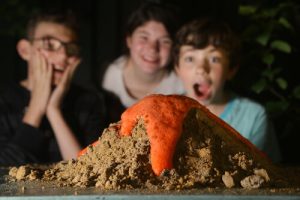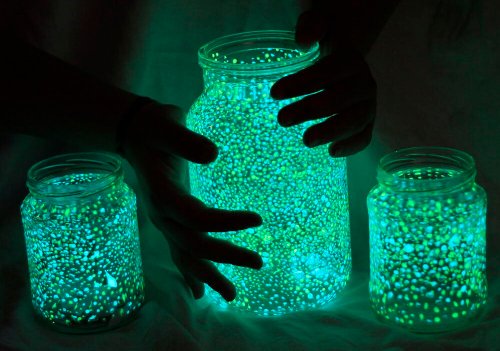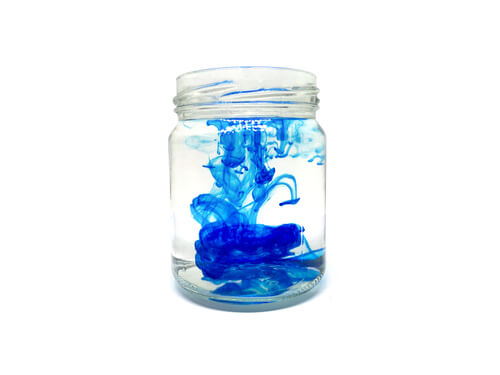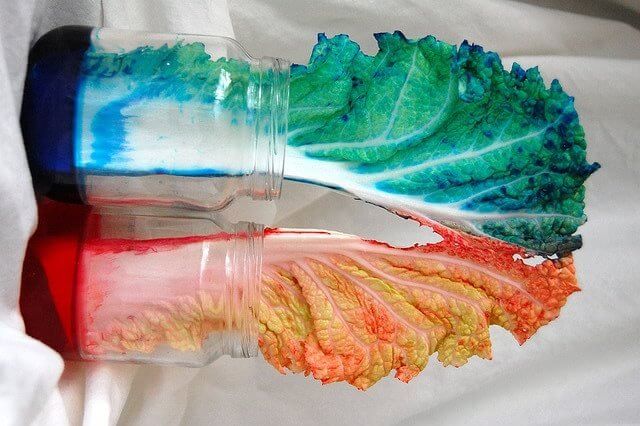5 Exciting Experiments to Try with Your Children


Written and verified by the psychopedagogue María José Roldán
Having a list of exciting experiments to do with your little ones is always a good idea. The activities you’ll find in this article are great for rainy days or any other circumstances that leave you stuck at home.
Below we’ll explain 5 of the most popular experiments for children and how you can carry them out in your home. Not only will these activities provide your family with fun and laughter, they will also spark your children’s curiosity.
Are you ready to astonish your kids with scientific experimentation?
Children are active by nature. They love challenges and are full of curiosity. That’s why it’s great to provide them with frequent opportunities to study and investigate. These activities aren’t only about having a good time!
Through these experiments, children get to know more about the world around them, while having fun at the same time.
Scientific experiments allow children to learn some of the basic principles behind everyday events and explore the world of science in general. Your little ones will begin to discover the scientific method.
Furthermore, little by little, they will begin to acquire basic notions of scientific concepts that they’ll study in the future in more detail.
There’s no need for a well-equipped science lab to carry out the activities we’ll tell you about today. All you need is a table and few materials, and you and your children will be ready to be amazed.
The 5 most popular experiments for children
1. Flourescent lamps

An experiment that is both fun and useful.
Materials
- Various flourescent light sticks, bracelets or necklaces
- Clean glass containers with tight-fitting lids
- Rubber or plastic gloves
- Scissors
- Pieces of tulle
Procedure
- Line the inside of the glass jar with the tulle fabric
- Put on your gloves
- Cut one end of the light sticks in order to extract the liquid from inside
- Spread the liquid from the light sticks around the interior of the jars, staining both the fabric and the glass. This will cause them both to glow in the dark.
- Close the container tightly with the lid and shake. Go to a dark room and observe the beautiful effect. You can also try this experiment at night and take the jar outside to enjoy under the night sky.
2. Can you put an egg in a bottle?
This experiment is almost like a magic trick.
Materials
- One hard-boiled egg
- A glass bottle with a neck that is more narrow than the egg
- Several matches
Procedure
- Place the egg above the opening of the glass bottle. Observe with your children how the egg will not go in because it’s too big.
- Take the egg in one hand and the matches in the other.
- Light three or four matches and place them in the bottle.
- Immediately place the egg on the bottle’s opening, as before.
- Little by little, the egg will squeeze through the bottle’s opening and finally fall inside.
The cause behind this phenomenon is the difference of the pressure inside the bottle and the pressure outside of the bottle. Because the hard-boiled egg is flexible, it takes on a new shape in order to fit inside the bottle.
3. An ocean in a bottle
This is a simple experiment with a strong power to attract the little ones in your home.
Materials
- Blue water paint or food coloring
- Oil and water
- A bottle or jar made of glass or plastic, with a tight-fitting lid.

Procedure
- Fill the bottle 3/4 full with water.
- Add a few drops of paint/coloring and mix.
- Fill the rest of the bottle with oil. Baby oil or another colorless oil work best.
- Close the container and move it around.
The ocean inside the container will make bubbles, waves and other fun effects. Why does this occur?
The oil and the water dance around one another, but they don’t mix. The difference in the density of the two liquids and the difference in color create a beautiful effect.
4. Colored cabbage

Material
- 4 glasses with a few inches of water
- 4 leaves of nappa cabbage or kale
- Food coloring – 4 different colors
Procedure
- Plate a few drops of food coloring in each glass. Each glass should get a different color.
- Place one leaf in each glass, with the cut end inside the water.
- Leave the jars in a spot where your children can observe them regularly. After some time (several hours, or the next day), the leaves will begin to change color.
- You can also try this experiment using flowers. Baby’s breath and Queen Anne’s lace are both great options.
5. Sugary volcano
Besides being a lot of fun, the following experiment is very useful in providing your children with new information. It’s also a good tool for teaching your children how harmful it can be to consume the two ingredients at the same time.
Materials
- A 2 liter soft drink bottle, with the soft drink inside.
- One tube of Mentos candy
- One tube made of construction paper that will serve as a funnel
- A wide, flat surface where you can conduct the experiment. Keep in mind, things are going to get messy, so you’ll want to try this outdoors.
Procedure
- Place the soft drink bottle on a wide, flat surface.
- Remove the lid.
- Insert one end of the construction paper tube in the mouth of the bottle.
- Using the funnel, place several mentos inside the bottle. Be sure that they all fall into the bottle at the same time.
- Remove the construction paper tube and move away immediately. Watch the eruption begin!
What’s the explanation? Soft drinks contain carbon dioxide (the gas that makes up the bubbles). The candies cause this gas to separate from the liquid. It accumulates around the candies and quickly expands. This causes the volcanic eruption.
To make this experiment even more interesting and realistic, have your children create a more life-like volcano.
They can use sand, paper mache, or homemade dough. This will put your little one’s creativity and artistic talent to work, and also provide more family fun time.
However, it’s important for you and your children to understand that the experiments should always be done under adult supervision.
Having a list of exciting experiments to do with your little ones is always a good idea. The activities you’ll find in this article are great for rainy days or any other circumstances that leave you stuck at home.
Below we’ll explain 5 of the most popular experiments for children and how you can carry them out in your home. Not only will these activities provide your family with fun and laughter, they will also spark your children’s curiosity.
Are you ready to astonish your kids with scientific experimentation?
Children are active by nature. They love challenges and are full of curiosity. That’s why it’s great to provide them with frequent opportunities to study and investigate. These activities aren’t only about having a good time!
Through these experiments, children get to know more about the world around them, while having fun at the same time.
Scientific experiments allow children to learn some of the basic principles behind everyday events and explore the world of science in general. Your little ones will begin to discover the scientific method.
Furthermore, little by little, they will begin to acquire basic notions of scientific concepts that they’ll study in the future in more detail.
There’s no need for a well-equipped science lab to carry out the activities we’ll tell you about today. All you need is a table and few materials, and you and your children will be ready to be amazed.
The 5 most popular experiments for children
1. Flourescent lamps

An experiment that is both fun and useful.
Materials
- Various flourescent light sticks, bracelets or necklaces
- Clean glass containers with tight-fitting lids
- Rubber or plastic gloves
- Scissors
- Pieces of tulle
Procedure
- Line the inside of the glass jar with the tulle fabric
- Put on your gloves
- Cut one end of the light sticks in order to extract the liquid from inside
- Spread the liquid from the light sticks around the interior of the jars, staining both the fabric and the glass. This will cause them both to glow in the dark.
- Close the container tightly with the lid and shake. Go to a dark room and observe the beautiful effect. You can also try this experiment at night and take the jar outside to enjoy under the night sky.
2. Can you put an egg in a bottle?
This experiment is almost like a magic trick.
Materials
- One hard-boiled egg
- A glass bottle with a neck that is more narrow than the egg
- Several matches
Procedure
- Place the egg above the opening of the glass bottle. Observe with your children how the egg will not go in because it’s too big.
- Take the egg in one hand and the matches in the other.
- Light three or four matches and place them in the bottle.
- Immediately place the egg on the bottle’s opening, as before.
- Little by little, the egg will squeeze through the bottle’s opening and finally fall inside.
The cause behind this phenomenon is the difference of the pressure inside the bottle and the pressure outside of the bottle. Because the hard-boiled egg is flexible, it takes on a new shape in order to fit inside the bottle.
3. An ocean in a bottle
This is a simple experiment with a strong power to attract the little ones in your home.
Materials
- Blue water paint or food coloring
- Oil and water
- A bottle or jar made of glass or plastic, with a tight-fitting lid.

Procedure
- Fill the bottle 3/4 full with water.
- Add a few drops of paint/coloring and mix.
- Fill the rest of the bottle with oil. Baby oil or another colorless oil work best.
- Close the container and move it around.
The ocean inside the container will make bubbles, waves and other fun effects. Why does this occur?
The oil and the water dance around one another, but they don’t mix. The difference in the density of the two liquids and the difference in color create a beautiful effect.
4. Colored cabbage

Material
- 4 glasses with a few inches of water
- 4 leaves of nappa cabbage or kale
- Food coloring – 4 different colors
Procedure
- Plate a few drops of food coloring in each glass. Each glass should get a different color.
- Place one leaf in each glass, with the cut end inside the water.
- Leave the jars in a spot where your children can observe them regularly. After some time (several hours, or the next day), the leaves will begin to change color.
- You can also try this experiment using flowers. Baby’s breath and Queen Anne’s lace are both great options.
5. Sugary volcano
Besides being a lot of fun, the following experiment is very useful in providing your children with new information. It’s also a good tool for teaching your children how harmful it can be to consume the two ingredients at the same time.
Materials
- A 2 liter soft drink bottle, with the soft drink inside.
- One tube of Mentos candy
- One tube made of construction paper that will serve as a funnel
- A wide, flat surface where you can conduct the experiment. Keep in mind, things are going to get messy, so you’ll want to try this outdoors.
Procedure
- Place the soft drink bottle on a wide, flat surface.
- Remove the lid.
- Insert one end of the construction paper tube in the mouth of the bottle.
- Using the funnel, place several mentos inside the bottle. Be sure that they all fall into the bottle at the same time.
- Remove the construction paper tube and move away immediately. Watch the eruption begin!
What’s the explanation? Soft drinks contain carbon dioxide (the gas that makes up the bubbles). The candies cause this gas to separate from the liquid. It accumulates around the candies and quickly expands. This causes the volcanic eruption.
To make this experiment even more interesting and realistic, have your children create a more life-like volcano.
They can use sand, paper mache, or homemade dough. This will put your little one’s creativity and artistic talent to work, and also provide more family fun time.
However, it’s important for you and your children to understand that the experiments should always be done under adult supervision.
This text is provided for informational purposes only and does not replace consultation with a professional. If in doubt, consult your specialist.








